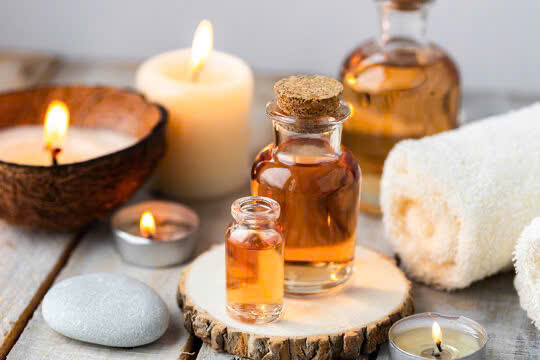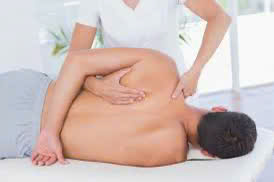Why Massage Is the Best Choice for Effective Pain Relief
In today’s fast-paced world, pain and discomfort have become common issues affecting millions. Whether it’s chronic back pain, muscle tension, or stress-related ailments, people are constantly seeking effective and natural ways to find relief. Among the various options available, massage stands out as one of the most holistic and reliable methods. Not only does it provide immediate comfort, but its numerous health benefits contribute to long-term well-being. If you’re wondering what is massage and why it might be suitable for you, this comprehensive guide will explore everything you need to know—from the top benefits of massage to how to select the right type for your specific needs.

Massage
Massage therapy has been used for thousands of years across cultures worldwide. It involves manipulating soft tissues of the body—muscles, connective tissues, tendons, and ligaments—using different techniques that promote relaxation, increase circulation, and alleviate pain. Over time, scientific research has validated many traditional beliefs about massage, revealing its profound impact on physical and mental health.
In our modern era, massage has evolved into a sophisticated health practice with numerous specialized types tailored to address specific issues. From relaxing Swedish massages to targeted deep tissue work, understanding the types of massage available can help you make an informed choice. The core idea behind massage remains consistent: applying deliberate pressure and movement to ease discomfort, reduce stress, and improve overall health.
The Role of Touch in Healing
One of the fundamental reasons massage is so effective is the power of touch. Touch stimulates the body’s nervous system, releasing feel-good hormones like endorphins and serotonin. It also reduces cortisol levels, which are associated with stress. This biophysical response not only relieves pain but also enhances mood, improves sleep, and boosts immunity.
Furthermore, massage can help break down scar tissue, improve flexibility, and restore range of motion—especially beneficial for athletes or individuals recovering from injury. These physical effects are complemented by psychological benefits, making massage a holistic approach to health that addresses both body and mind.
The Growing Popularity of Massage Therapy
As awareness of alternative and complementary medicine grows, more people are turning to massage as a primary or adjunct treatment for pain relief. Clinics, spas, wellness centers, and even hospitals now incorporate massage therapy into their treatment protocols. Its non-invasive nature makes it a preferred choice among those wary of medications or surgical interventions.
The Need for Personalized Approaches
Every individual’s body responds differently to massage. Factors such as age, health conditions, pain locations, and personal preferences influence what type of massage will be most effective. Recognizing these differences underscores the importance of understanding which one is right for you and how to choose types of massage based on your unique needs.
What is massage

Before delving deeper into the benefits and types of massage, it’s crucial to define what is massage in a comprehensive manner. Many people associate massage solely with relaxation or luxury spa treatments, but its scope extends far beyond that notion.
What is massage? Essentially, it’s a systematic manual therapy involving the application of pressure, tension, motion, or vibration to soft tissues. Professional massage therapists employ various techniques to manipulate muscles and fascia, aiming to optimize function, ease pain, and promote healing.
The Science Behind Massage
The scientific basis of massage involves multiple physiological mechanisms. When performed correctly, massage increases blood flow, which delivers oxygen and nutrients to tissues while removing metabolic waste. It also helps relax tight muscles, reduce inflammation, and stimulate the lymphatic system to enhance immune function.
Research indicates that massage can modulate neural pathways, decreasing the perception of pain through mechanisms like gate control theory, where sensory input overrides pain signals. Additionally, it influences hormonal responses, reducing stress hormones and boosting mood-enhancing neurotransmitters.
Techniques and Modalities
What is massage isn’t limited to a single style; instead, it encompasses a broad spectrum of modalities, each with specific techniques suited to particular goals:
- Swedish Massage
- Deep Tissue Massage
- Sports Massage
- Trigger Point Therapy
- Myofascial Release
- Aromatherapy Massage
- Shiatsu
- Thai Massage
Understanding these differences allows individuals to select treatments aligned with their personal needs, whether for relaxation, injury recovery, or pain management.

The Benefits of Understanding Massage
Grasping what is massage enables clients to communicate more effectively with practitioners, setting realistic expectations. It also empowers individuals to take charge of their health by incorporating massage into their wellness routines, whether at home or in professional settings.
Safety and Considerations
While massage offers numerous benefits, it’s important to recognize contraindications. Certain conditions—like infections, skin conditions, or blood clotting issues—may require medical consultation before pursuing massage therapy. Proper assessment and communication with healthcare professionals ensure safe and effective treatment.
Top 10 benefits of massage
The top 10 benefits of massage extend beyond mere relaxation. They encompass physical improvements, mental health enhancement, and even preventative care measures, making massage a versatile tool for promoting overall well-being.
Stress Reduction and Mental Relaxation
One of the most immediate benefits of massage is stress relief. The gentle manipulation of muscles triggers the parasympathetic nervous system—the body’s rest-and-digest response. This results in lowered heart rate and blood pressure, reduction in cortisol levels, and a general sense of calmness. Regular massage sessions can help manage anxiety and depression, fostering mental clarity and emotional resilience.
Pain Management and Muscle Relief
Massage is highly effective in alleviating acute and chronic pain. By targeting specific trigger points and tense muscles, it reduces stiffness and soreness. For example, those suffering from lower back pain often report significant improvement after massage therapy. Additionally, massage promotes the release of endorphins, the body’s natural painkillers, providing opioid-free relief.
Improving Circulation and Lymphatic Drainage
Enhanced blood flow ensures that tissues receive essential nutrients while waste products are efficiently removed. Improved circulation can aid in faster recovery from injuries and diminish swelling or edema. Similarly, stimulating lymphatic flow supports immune function and detoxification processes.
Enhancing Flexibility and Range of Motion
Tight muscles and fascia restrict movement, increasing injury risk and impairing daily activities. Massages like myofascial release or sports massage help loosen these tissues, improving flexibility. Athletes especially benefit from this, as increased range of motion can enhance performance and reduce injury likelihood.

Better Sleep Quality
Massage has a calming effect on the nervous system, often leading to better sleep quality. It reduces cortisol and stimulates serotonin production, which converts to melatonin, the hormone responsible for sleep regulation. Those suffering from insomnia or disrupted sleep patterns often find relief through regular massage sessions.
Boosting Immune Function
Regular massage therapy can positively influence immune function by reducing stress hormones and increasing activity of natural killer cells—components of the immune system responsible for fighting infections. This makes massage a valuable component of health maintenance routines.
Post-Injury Recovery and Rehabilitation
Massage accelerates healing by increasing blood flow to injured areas, breaking down scar tissue, and reducing inflammation. It complements other therapies like physiotherapy, helping patients regain mobility and reduce dependency on medication.
Skin Health and Appearance
Certain massage techniques, especially those paired with skincare products, can improve skin tone and elasticity. Increased circulation nourishes skin cells, giving a healthier glow and aiding in the reduction of cellulite.
Mental Clarity and Focus
Beyond physical benefits, massage provides mental clarity by clearing mental fog and enhancing concentration. It creates a meditative state that fosters mindfulness, which can be particularly beneficial in managing everyday stressors.
Prevention of Future Issues
Regular massage acts as preventive healthcare, addressing minor tensions before they develop into chronic problems. It encourages body awareness and early intervention, reducing the likelihood of long-term pain or injury.
Types of massage
Understanding types of massage is pivotal in choosing the most suitable therapy for your needs. Each modality offers distinct techniques, target areas, and outcomes. Here’s a closer look at some popular and effective forms of massage.
Swedish Massage
The most widely recognized form, Swedish massage, emphasizes relaxation through long, gliding strokes, kneading, tapping, and circular movements. It’s ideal for beginners or those seeking stress relief. The gentle nature of this massage enhances circulation, relieves muscle tension, and provides a soothing experience.
This technique employs five basic strokes:
- Effleurage (light gliding)
- Petrissage (kneading)
- Tapotement (percussion)
- Friction (deep circular movements)
- Vibration (shaking)
It’s often used as an introductory massage because of its gentle approach. Despite its relaxing reputation, Swedish massage can also alleviate minor aches and improve overall wellbeing.
Deep Tissue Massage
Deep tissue massage targets deeper layers of muscle and fascia to address chronic pain, knots, and injuries. It involves slower, more intense pressure, often focusing on specific problem areas. Although it may cause some discomfort during the session, the benefits include reduced muscle adhesions, improved mobility, and long-lasting relief.
Practitioners typically use forearm pressure, elbows, and thumbs to reach the deeper tissues. It is highly effective for athletes, individuals with repetitive strain injuries, or those experiencing persistent muscular pain. Since it can be intense, communication with your therapist about comfort levels is essential.
Sports Massage
Designed specifically for athletes, sports massage combines techniques from Swedish and deep tissue massage to prepare the body for peak performance, prevent injuries, and facilitate recovery. It focuses on muscle groups used extensively during training or competitions, aiming to improve flexibility and reduce soreness.
Pre-event sports massage is usually brisk and stimulating, whereas post-event therapy tends to emphasize relaxation and healing. Athletes often incorporate sports massage into their regular routines to maintain optimal physical condition.
Trigger Point Therapy
This modality concentrates on identifying and releasing trigger points—hyperirritable spots within muscle tissue that cause pain and refer sensations elsewhere. Trigger point therapy involves applying sustained pressure to deactivate these sensitive areas, alleviating pain and restoring normal function.
It’s particularly useful for headaches, neck and shoulder pain, and myofascial pain syndromes. Effective trigger point therapy requires skill and precision, as improper technique can exacerbate symptoms. It often complements other techniques for holistic pain management.
Myofascial Release
Myofascial release focuses on softening and elongating fascia—the connective tissue surrounding muscles and organs. Tight fascia can lead to restricted movement and pain; releasing it restores flexibility and reduces discomfort.
Therapists apply gentle, sustained pressure along fascial lines, encouraging release of restrictions. This technique is especially beneficial for chronic pain sufferers, fibromyalgia patients, and those with postural imbalances.
Aromatherapy Massage
Combining aromatherapy with massage enhances relaxation through the use of essential oils. These oils possess therapeutic properties, such as anti-inflammatory, calming, or energizing effects. The scents are absorbed through the skin and olfactory system, influencing mood and physical health.
Popular oils include lavender for relaxation, eucalyptus for respiratory support, and peppermint for invigorating sensation. This form is suitable for those seeking a sensory experience alongside physical benefits.
Shiatsu and Thai Massage
These Asian modalities utilize acupressure points and stretching techniques to balance energy flow. Shiatsu involves finger pressure along meridians, promoting internal harmony and pain relief. Thai massage incorporates assisted yoga-like stretches that improve flexibility and relieve muscular tension.
Both forms are more dynamic compared to Western massage styles and focus on holistic wellness, often integrating breathing exercises and rhythmic movements.
Which one is right for you
Choosing the right type depends on your individual needs, health conditions, and personal preferences. Making an informed decision involves assessing your specific issues and understanding what each modality offers.
Assess Your Needs and Goals
Start by clarifying what you hope to achieve with massage therapy. Are you looking for relaxation, pain relief, injury rehabilitation, or stress management? Different types of massage excel in addressing distinct concerns. For instance, Swedish massage is excellent for general relaxation, while deep tissue or trigger point therapy targets specific muscular problems.
Consider Your Physical Condition
Health issues such as cardiovascular problems, skin conditions, or pregnancy influence what kind of massage is appropriate. Always consult with a healthcare provider if you have underlying health concerns. Some massages, like deep tissue, may be contraindicated in certain cases, while others, like aromatherapy, might trigger allergies.
Personal Preferences and Comfort
Comfort is key to enjoying massage therapy. If you prefer gentle, soothing experiences, Swedish massage might be preferable. Conversely, if you want targeted relief from stubborn knots, deep tissue or myofascial release could be more suitable. Discuss your preferences with your practitioner to tailor the treatment accordingly.
Budget and Accessibility
Some massage types require specialized training and equipment, influencing cost and availability. Evaluate your budget and seek reputable providers skilled in the desired modality. Many clinics offer packages or memberships that make frequent sessions more affordable.
Frequency and Duration
Decide how often you wish to receive massage therapy and for how long. Chronic conditions may require weekly sessions, while occasional relaxation might suffice with monthly visits. Consistency enhances results, especially for ongoing pain management.
How to choose types of massage
Making an informed choice about which one is right for you involves a combination of self-assessment, research, and professional consultation. Here are detailed steps to guide this decision-making process.
Identify Your Specific Needs
Begin by pinpointing your primary concerns—be it stress, muscular pain, mobility issues, or recovery. Write down your symptoms, their severity, and any triggers or patterns. Clear goals will help narrow down suitable styles.
Research Different Modalities
Explore credible sources, such as professional associations, health websites, and testimonials. Understand the techniques, benefits, and contraindications associated with each type. Watching videos or reading articles can give visual insights into what to expect.
Consult with Professionally Certified Therapists
Schedule initial consultations with licensed therapists. Share your health history, goals, and preferences openly. Experienced practitioners can recommend tailored treatments based on their assessment, ensuring safety and efficacy.
Consider Trial Sessions
Sometimes, trying a short session of a different massage type helps determine personal comfort and effectiveness. Pay attention to how your body responds, the level of relaxation achieved, and any alleviation of symptoms.
Evaluate Logistics and Practicality
Factor in logistical aspects such as location, scheduling flexibility, and cost. A convenient and affordable option increases the likelihood of maintaining regular therapy, which is often necessary for chronic conditions.
Prioritize Safety and Qualifications
Choose licensed and insured therapists with specialized training relevant to your needs. Verify credentials, read reviews, and ask about hygiene practices. Ensuring safety enhances the overall experience and outcomes.
Why massage is the best choice for pain relief
Among various pain management strategies, why massage is the best choice for pain relief lies in its multifaceted approach, minimal side effects, and ability to treat root causes rather than merely masking symptoms. It integrates physical, neurological, and psychological benefits, making it a powerful therapy.
Non-Invasive and Natural Approach
Unlike medications or surgical procedures, massage provides a non-invasive means of pain relief without chemical side effects or risks associated with invasive interventions. This natural approach appeals to those seeking holistic health solutions.
Addresses Underlying Tensions and Imbalances
Pain often results from muscle tension, poor posture, or fascial restrictions. Massage directly targets these issues, promoting realignment, loosening tight tissues, and restoring normal function. Consequently, it offers long-term relief rather than temporary masking.
Stimulates Endogenous Painkillers
Massage induces the release of endorphins and serotonins, reducing pain perception naturally. This biochemical effect can make pain manageable without reliance on pharmaceuticals, minimizing potential dependency or adverse reactions.
Enhances Blood Flow and Circulation
Improved circulation facilitates healing by delivering nutrients and oxygen to damaged tissues while removing inflammatory mediators. Enhanced blood flow accelerates recovery and reduces chronic inflammation that sustains pain.
Reduces Stress and Muscle Spasms
Chronic pain often coexists with stress, which can exacerbate muscular tension. Massage’s calming effects help break this vicious cycle, leading to reduced muscle spasms and pain intensity.
Promotes Overall Wellness and Preventive Care
Regular massage not only alleviates existing pain but also prevents future occurrences by maintaining musculoskeletal health, improving posture, and reducing stress levels. It empowers individuals to actively participate in their health management.
Complementary to Medical Treatments
Massage can augment conventional medical treatments, making it an integral part of a multidisciplinary approach. It addresses pain holistically, considering physical, emotional, and lifestyle factors that influence health.https://www.google.com/knowledgegraphshares?client=mobilesearchapp&sca_esv=b028dc8ec1d9dff5&bih=879&biw=428&channel=iss&cs=0&hl=vi&rlz=1MDAPLA_viAE995AE995&v=372.0.765951532&sxsrf=AE3TifM54Yon2BzKzAbwaxh-sMX16CRcag:1750078915591&kgmid=/g/11ldd2b847&q=Thai+massage+-+spa+massage+home+service+downtown+Dubai&shndl=30&shem=lcuae,uaasie&source=sh/x/loc/tile/m1/5&kgs
Conclusion
Massage stands out as a superior choice for effective pain relief due to its holistic approach that combines physical manipulation, biochemical responses, and psychological benefits. Understanding what is this and exploring the top 10 benefits reveals its capacity to reduce stress, improve circulation, accelerate healing, and promote overall wellness. With a wide array of types, selecting which one is right for you involves careful consideration of personal needs, health status, and preferences. Knowing how to choose types of massage ensures you receive tailored treatment that maximizes benefits. Ultimately, why massage is the best choice for pain relief stems from its natural, non-invasive, and versatile approach to addressing both symptoms and root causes, making it an essential component of a comprehensive health and wellness strategy.https://jobedubaispa.com/arabic-massage-and-moroccan-bath/
